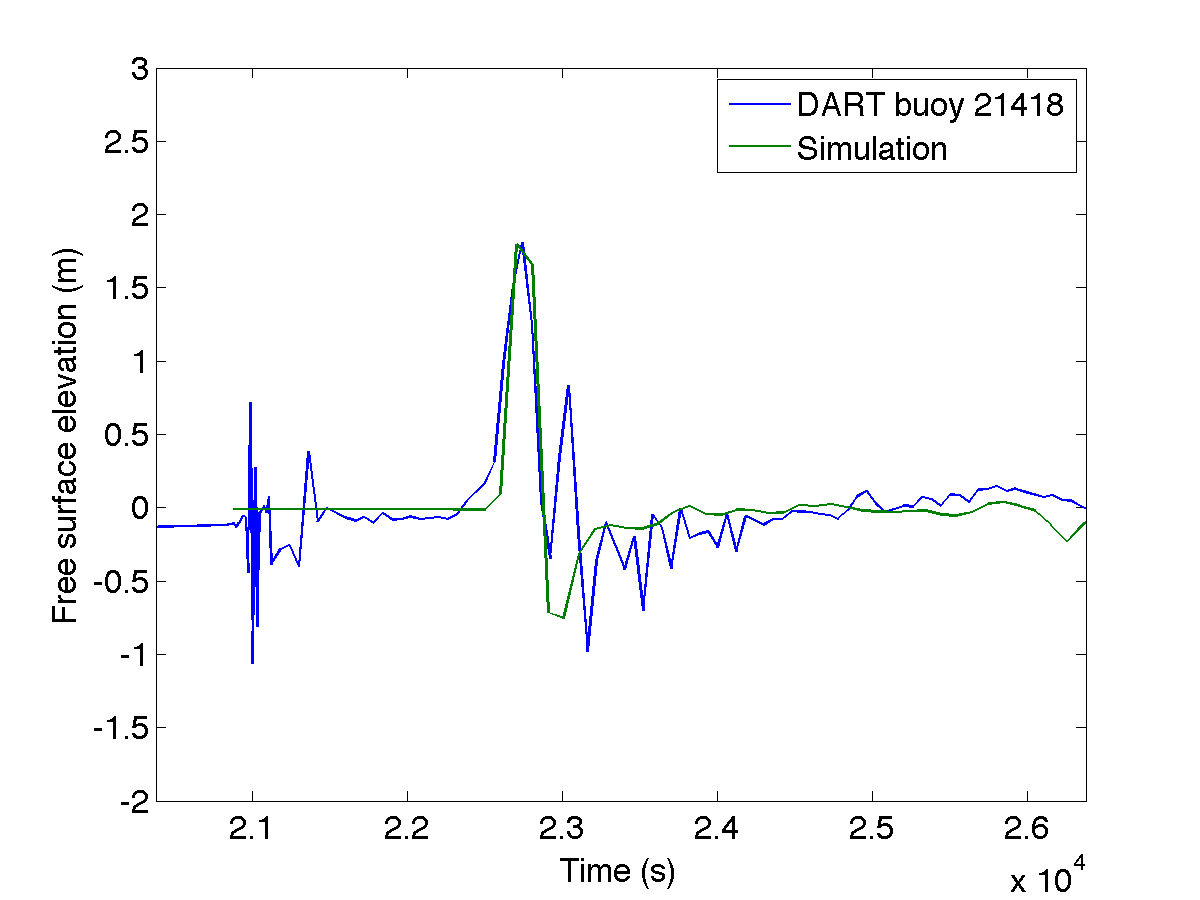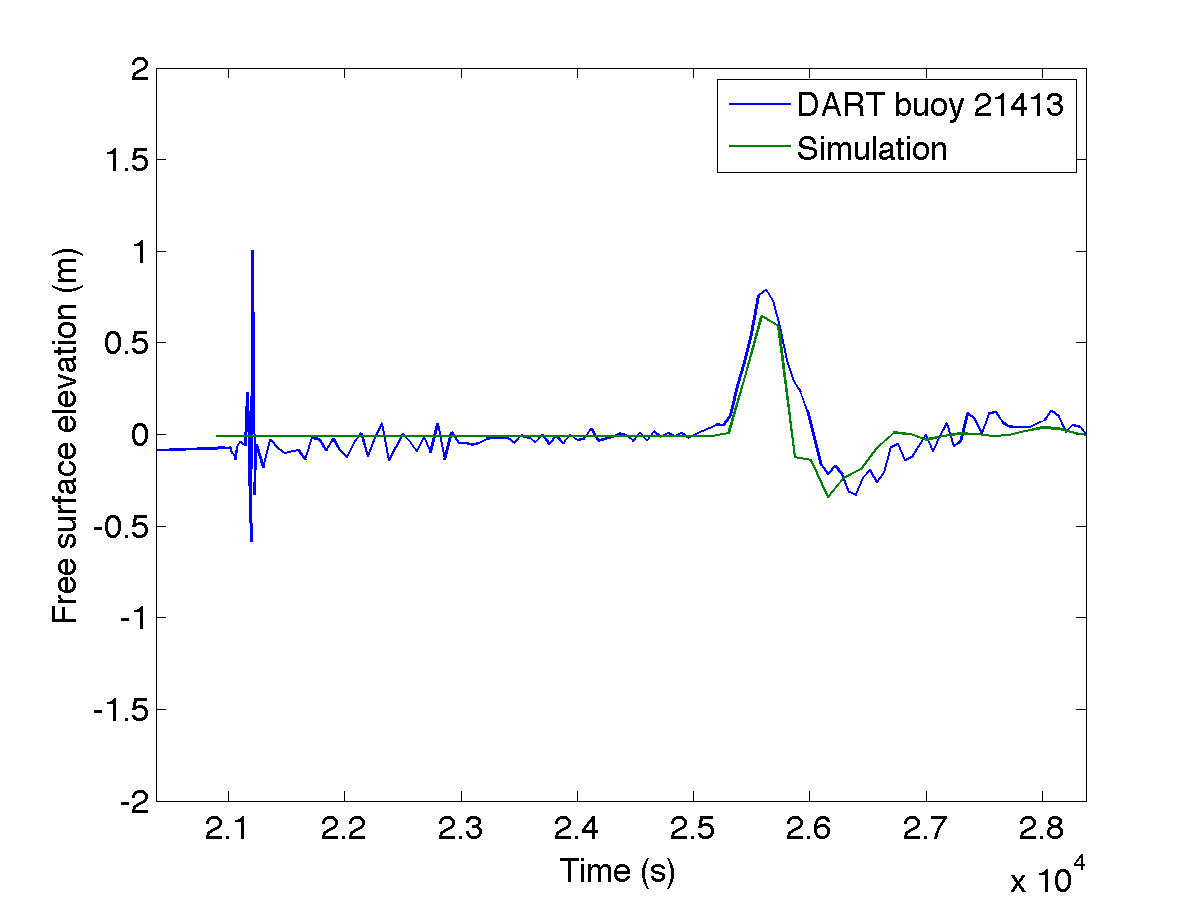Section: New Results
Free surface geophysical flows
Participants : Emmanuel Audusse [LAGA - Université Paris 13, Institut Galilée] , Anne-Céline Boulanger, Marie-Odile Bristeau, Benoît Perthame, Jacques Sainte-Marie, Nicolas Seguin, Edwige Godlewski, Anne Mangeney, Yohan Penel, Raouf Hamouda, Philippe Ung.
The ANGE team has been created in november 2012. This new team (led by J. Sainte-Marie) resumes the activities of the BANG team concerning geophysical flows.
We are involved in research concerning the numerical simulation of free surface geophysical flows such as rivers, lakes, coastal areas and also overland flows. Many applications related to environmental problems are concerned : floodings, dam breaks, swell, transport and diffusion of pollutants, water quality, upwellings, sustainability of aquatic ecosystems, ...
The basic model for these problems is the 3D free surface Stokes system leading to a 3D solver [52] with a moving mesh. However for efficiency reasons, vertically averaged models such as the Saint-Venant system [54] are often used.
The Saint-Venant equations are deduced of the Navier-Stokes system with two main assumptions:
We have developed extensions of the Saint-Venant system where the basic Saint-Venant solver [51] is still used and, in that way, the robustness, the efficiency and the easiness to treat the free surface are preserved while the domain of validity is larger.
In these extensions, we relax the two above assumptions. Actually, we have derived a non-hydrostatic shallow water model and a multilayer Saint-Venant system.
We have coupled the hydrodynamics of free surface flows with other phenomena such as biology (phytoplankton culture) or erosion.





